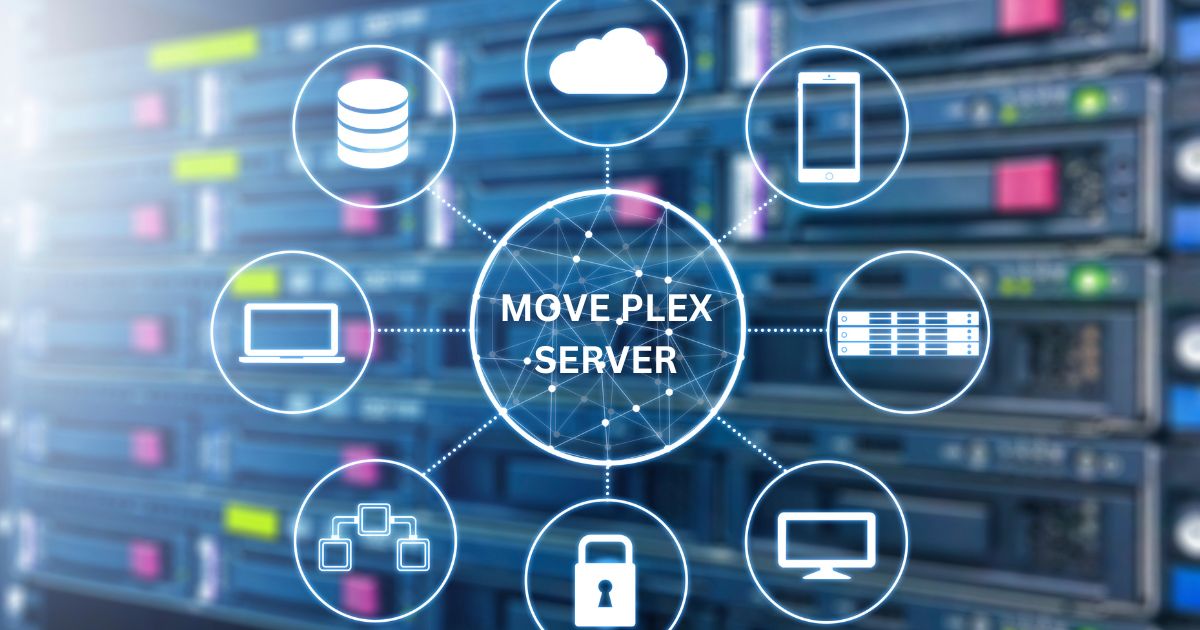Is RAM a Software or Hardware?

RAM, or Random Access Memory, is a computer memory that is used to store the working data and machine code currently being used by a computer.
Unlike other storage devices that have a longer access time, RAM is designed to be accessed quickly and can read or write data in any order, thus the term “random access.”
In this article we will discuss in detail about “Is RAM a Software or Hardware?”
RAM and Its Importance in Computing
The RAM is one of the most important parts of computer hardware that is used as the short-term memory of the system. It keeps data that is frequently used and from which the CPU can access quickly, which contributes to efficient data retrieval and processing.
Different from long-term storage devices e.g. SSDs and HDDs, RAM functions at high speed and delivers data to the CPU almost instantly.
This affects the overall speed and performance of a computer: the more RAM a system has the more information it can handle at once and hence/therefore/thereupon it can perform multiple tasks and process bigger files at a faster rate.
RAM Functionality and Role in Computers
The functionality of RAM is pivotal to a computer’s performance.
- Immediate Data Access: RAM facilitates the CPU to get hold of data instantly for immediate computation as opposed to the process of reading data from the hard drive which is slower.
- Multitasking Efficiency: Adequate RAM enables a computer to run several applications at the same time without substantial reductions in speed, which improves end user productivity.
- Volatile Storage Nature: RAM is volatile, which means it loses all the contents when powered off, therefore, it is used for storing data temporarily, while tasks are in progress.
- System Performance: The RAM quantity is directly proportional to the system’s capacity to process more activities at the same time; hence, it is an essential factor to overall system performance.
- Speed of Read/Write Operations: RAM’s random access memory (RAM) capacity to read and write is much faster than the permanent store devices, which contributes greatly to the quick responsive computing environment.
- Role in Program Execution: Every program running on a computer uses a portion of RAM to execute tasks and store operational data.
- Impact on Gaming and Editing Software: High-performance tasks, such as gaming or video editing, require substantial RAM to handle larger files and prevent lag.
- Upgrade Compatibility: Adding more RAM is often one of the simplest upgrades that can be made to a computer to improve its performance, especially as software demands increase over time.
Essentially, RAM can be thought of as the computer’s short-term memory, in contrast to the long-term memory provided by hard drives and solid-state drives.
Is RAM Hardware or Software?
RAM is unequivocally considered hardware within a computer system. It consists of physical memory chips that can be found on the motherboard or on a separate memory module. This hardware is responsible for the temporary storage of the data that the computer’s processor needs in real-time.
Is RAM a Software or Hardware? Unlike software which comprises the programs and operating systems that run on the hardware, RAM does not contain any fixed data or instructions that can be executed.
It is a volatile storage medium, meaning all data stored in RAM is lost when the power is turned off, distinguishing it further from permanent software storage solutions.
Also Read: What Three Parts Of A Computer Can Accept Input
Hardware Aspects of RAM
Physical Characteristics of RAM Modules
RAM modules like memory sticks are generally in the DIMM (for desktops and servers) and SO-DIMM (for notebooks) forms due to their smaller size.
Every module consists of several memory chips soldered onto the printed circuit board, which is used for the electric connection with the motherboard.
Is RAM Hardware or Software? The RAM modules go into the proper slots on the motherboard and have notches that prevent the wrong orientation or insertion into the wrong slots.
Types of RAM
There are several types of Random Access Memory, each with unique features and performance metrics:
- Dynamic RAM (DRAM): This is the most common type of RAM, which stores each bit of data in a separate capacitor, making it dynamic because it needs to be refreshed frequently to maintain the data.
- Static RAM (SRAM): Faster and more expensive than DRAM, SRAM uses flip-flops to store data, which does not require refreshing. It is used in cache memory and also for certain high-speed applications.
- Synchronous Dynamic RAM (SDRAM): An advancement of DRAM, it operates in sync with the CPU clock speed which improves the speed.
- Double Data Rate SDRAM (DDR SDRAM): With versions like DDR, DDR2, DDR3, and DDR4, this RAM sends data on both the rising and falling edges of the clock signal, effectively doubling the data rate of the SDRAM.
Difference between RAM and Storage (HDD/SSD)
The main difference between RAM and other forms of storage like HDDs (Hard Disk Drives) or SSDs (Solid State Drives) lies in their respective functions and the type of memory they utilize. RAM is volatile memory designed for temporary storage and quick data access to facilitate active tasks.
In contrast, HDDs and SSDs provide non-volatile storage, retaining data even when powered off, meant for long-term data retention.
HDDs consist of magnetic storage and moving parts, making them larger and slower, while SSDs use flash memory with no moving parts, allowing for smaller sizes and faster data access speeds.
Software Interaction with RAM
How the Operating System Manages RAM?
Is RAM Hardware or Software? Operating systems play a critical role in managing RAM efficiently. They use a memory management unit (MMU) to handle all RAM-related operations, with tasks such as:
- Memory Allocation: When programs are launched, the operating system allocates specific RAM segments to them. This reserved memory ensures that the application has sufficient space to operate effectively.
- Prioritization: The operating system prioritizes the allocation of RAM to different processes based on their urgency and importance, ensuring that critical tasks receive the necessary resources.
- Memory Protection: The system prevents one application from accessing the memory space of another to maintain stability and security, avoiding potential crashes or data corruption.
- Swap Space Management: Operating systems use a portion of the system’s hard drive as virtual memory to supplement RAM, moving less critical data to the swap space when necessary.
Software Applications and Their RAM Usage
Software applications vary widely in their RAM usage:
- Lightweight Apps: Text editors and other simple applications generally have low memory footprints, requiring minimal RAM.
- Intensive Software: High-demand applications (e.g., video editing, 3D rendering software) need more RAM to process larger datasets efficiently without lag or delay.
- Background Processes: Even when not actively used, many programs run background processes that consume RAM, which can accumulate and affect overall performance.
The Concept of Virtual Memory
Virtual memory is a crucial concept in computing which allows the system to compensate for physical RAM shortages. Operating system solves this issue by assigning some portion of the hard disk or SSD as the additional memory since running applications will have adequate memory to perform. This process involves:
- Page File: Virtual memory is usually used as a page file or as a swap space on the storage drives.
- Page Faults: Once the system has exhausted its RAM, it starts moving the data that is not as urgently needed to the page file, but because of the slower page read/write access, this may cause the system to be slower due to page faults.
- Overhead Management: The performance of virtual memory is affected by the efficacy of the operating system in managing the overhead of disk accesses smoothly.
Common Misconceptions: Is RAM a Software or Hardware?
Clarifying Why RAM Isn’t Software
The belief that Random Access Memory (RAM) is software is a myth: it is a really important hardware component. This utter confusion may lie in the nature that RAM and software programming interact really closely.
But they are different by their function and characteristics. RAM is a solid state storage that is composed of integrated circuits for initially storing data that the processor needs easy access to.
RAM acts as the short-term computer memory, enabling tasks completion by processing the data for instant usage.
Is RAM a Software or Hardware? Instead of hardware, the term software refers to the data that the computer receives and instructions that come along on how to conduct specific tasks.
The programs consist of operating systems, applications, and the whole set of programs that executes on the computers hardware.
Although software is loaded into the RAM for active use and stored permanently on hard disks or solid state disks, it remains intact even when power is lost, the feature the primary difference between the volatile nature of the RAM.
Also Read: CPU Overheating How To Fix?
Examples of Software That Are Commonly Confused with RAM
In discussing RAM and software, there is often confusion between the two due to their interdependent roles in running applications and managing tasks. Below are examples of software that people sometimes incorrectly refer to as RAM:
- Operating systems (e.g., Windows, macOS, Linux): An operating system manages the hardware resources and provides services for computer programs. It is persistent software, stored on a hard drive or SSD, but loads into RAM during operation.
- Cache Memory: Although it is a type of memory similar to RAM, and involved in the storage of frequently accessed data to expedite access, it is not RAM but a part of the storage hierarchy between CPU and RAM.
- Virtual Memory: This term refers to the use of space on a storage device to extend RAM capacity, but it’s not RAM itself; it’s a software-level manipulation to optimize the available physical RAM.
- BIOS/UEFI Firmware: These are software programs permanently written onto hardware components to enable them to initialize and communicate with other parts of the system. They are sometimes mistaken as a part of RAM due to their role in booting up the system, which involves RAM checks.
Is RAM a Software or Hardware? Understanding the distinctions between RAM – a physical memory module – and software – a set of instructions and data – is essential in comprehending how they work together to enable computers to function correctly.
Moreover, recognizing the clear-cut differences dispels common misconceptions and provides a more profound appreciation for the complexities of computer architecture.
Conclusion
Is RAM a Software or Hardware? RAM is an essential hardware component that temporarily stores data for quick processor access, playing a critical role in the functionality of computers and other devices. Its primary functions include ensuring efficient program execution, resource allocation, and multitasking capabilities.
Conversely, software comprises the operating systems, applications, and other programs that provide instructions for the computer’s operations. Misconceptions commonly arise from the close interaction between RAM and software, but it is crucial to distinguish between the two. RAM is volatile and exists as a physical entity within the device, while software is a non-volatile collection of commands housed on data storage devices. Understanding these differences allows for a clearer perspective on a computer’s architecture and operation.
As we conclude, let us reemphasize that Random Access Memory, or RAM, is a foundational hardware element, intrinsic to the computational power and efficiency of modern technology.
FAQs
Is RAM a Software?
No, RAM (Random Access Memory) is not software. It is a type of computer hardware component that is physically installed in the computer or electronic device.
Is RAM a Hardware?
Yes, RAM is indeed a hardware component. It consists of physical memory chips that provide temporary storage space for data that the computer’s processor needs immediate access to when running programs and processing commands.
Is RAM an example of software?
No, RAM (Random Access Memory) is not an example of software. It is a hardware component in a computer or electronic device that temporarily stores data, allowing the device’s processor to access the data quickly. RAM is where active data is held, such as the information currently being used by running programs.
Is ROM hardware or software?
ROM (Read-Only Memory) is a type of hardware, specifically non-volatile memory that is used in computers and other electronic devices to store data permanently. Unlike RAM, the data in ROM is not lost when the device is turned off. It typically contains the system’s firmware or software that is closely tied to the hardware.
Is memory a part of hardware or software?
Memory refers to the physical devices used to store programs or data on a temporary or permanent basis for use in an electronic device. As such, it is considered a part of the device’s hardware. Software, on the other hand, is a collection of instructions and data that tell the hardware how to perform specific tasks.













